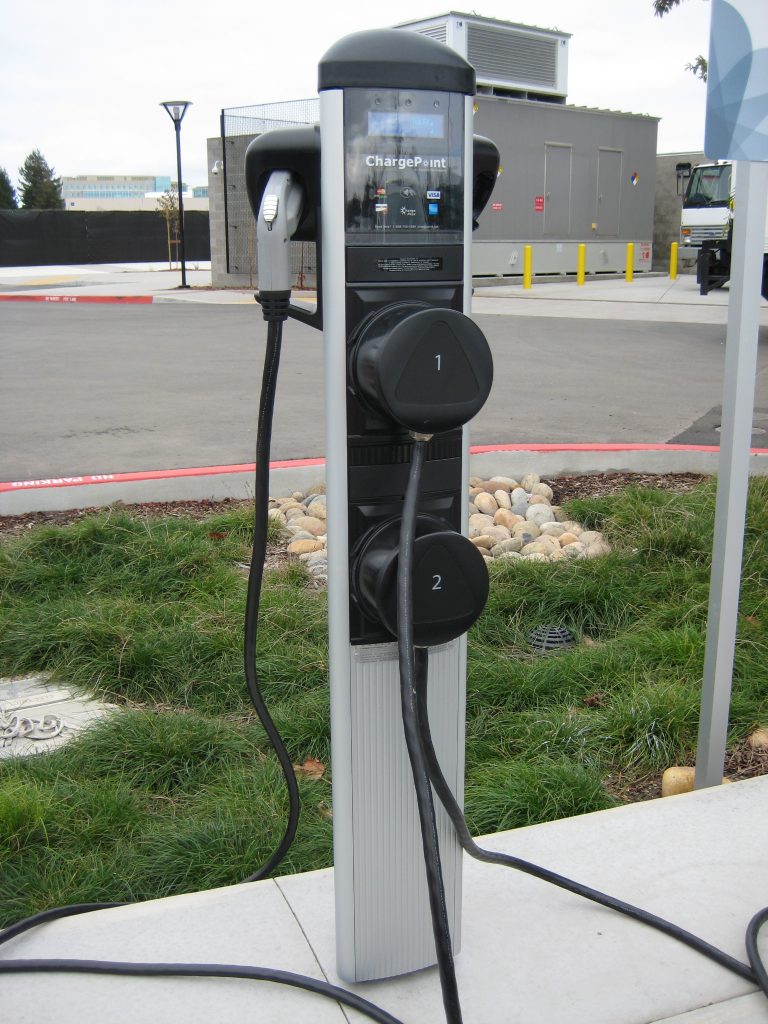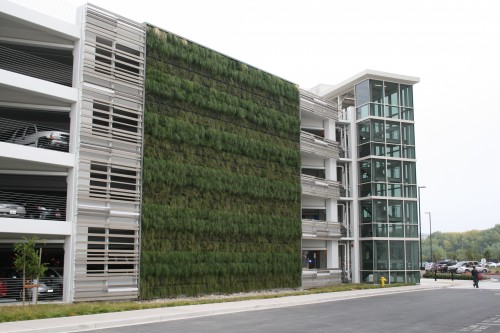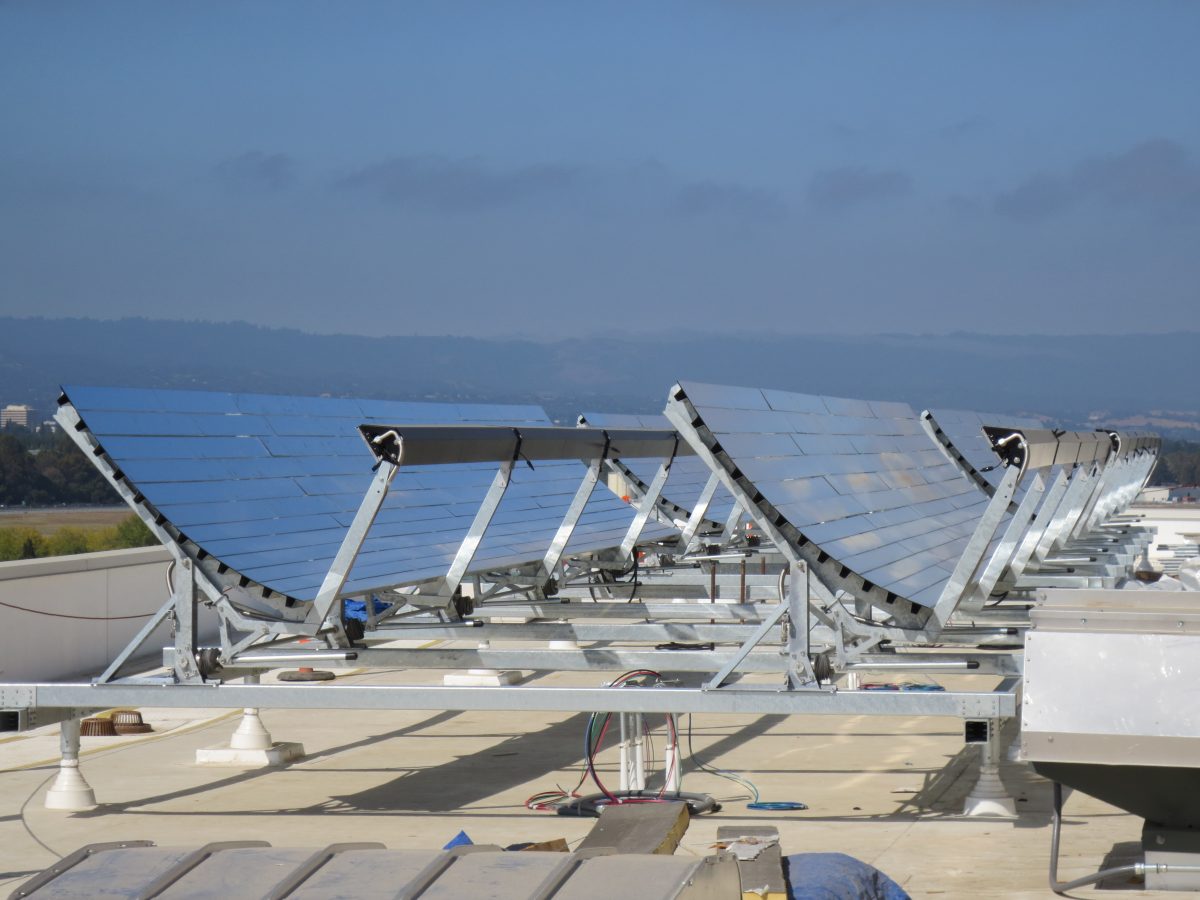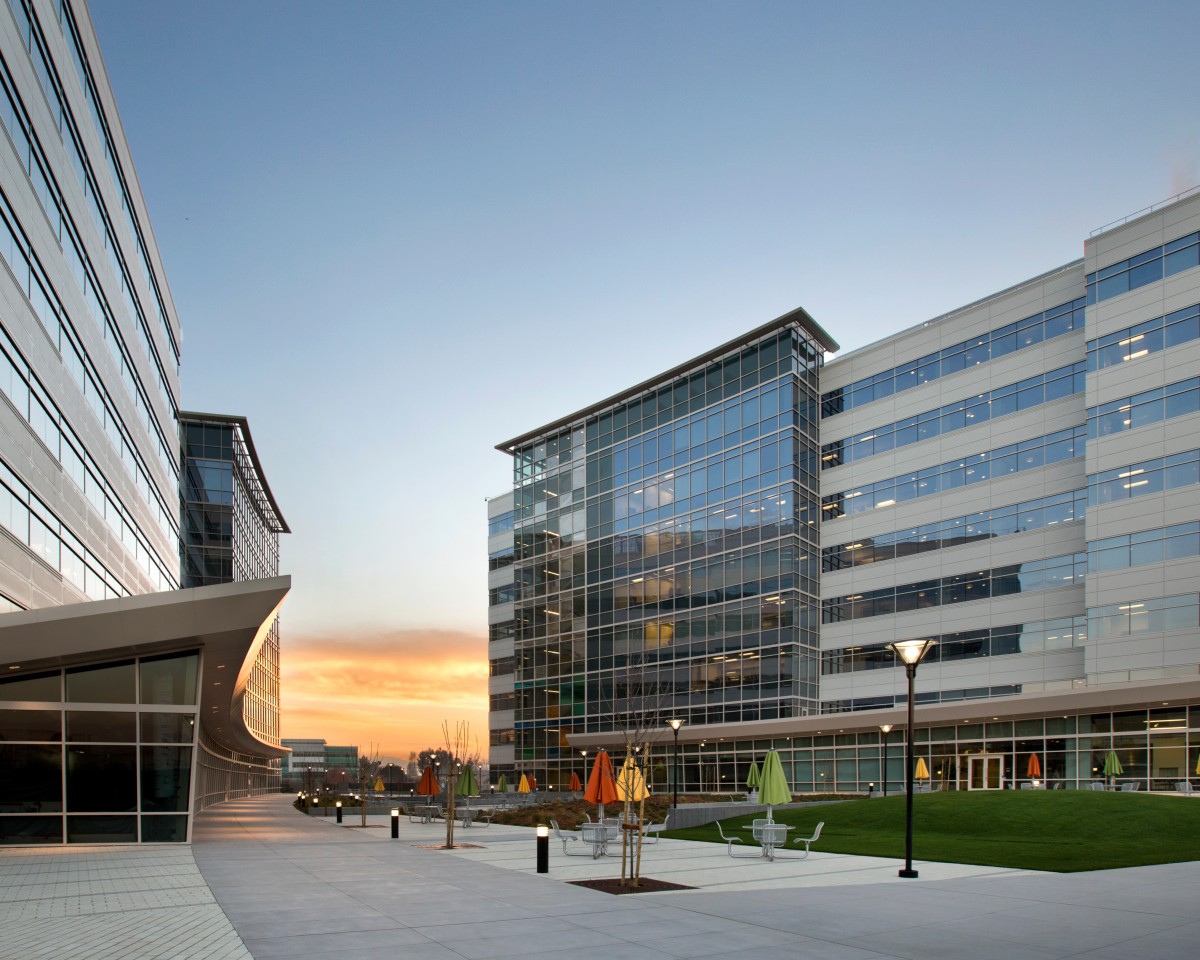Stories
A question we often hear from our clients is, “How can we make our workplace as energy efficient and sustainable as possible?” In this two-part Think blog, RMW architecture & interiors takes a look at two recently completed projects that offer some answers to that question: a commercial office campus in Sunnyvale and a tenant build-out in San Francisco. We chose these two projects as case studies because they illustrate architectural and interior design applications on very different scales, and both achieved the highest LEED certification level possible (Platinum).
Case Study #1: Juniper Networks Headquarters Campus, Sunnyvale

Juniper Networks is a provider of high-performance IP networking systems employing more than 9,000 people worldwide. With such a geographically diverse workforce, the company recognized a need for a new headquarters to serve as home base for its R&D culture. RMW designed a 10-building, 80-acre campus. The first two buildings, along with the associated sitework and parking structure, were completed in 2012.
Juniper was committed to making the new campus as sustainable as possible and identified three main goals: to increase energy efficiency, decrease the carbon footprint, and take demand off the power grid.

Since RMW was involved from the master planning stage, we were able to help shape a holistic approach to enhanced sustainability, integrating the entire design team. The site that Juniper selected is adjacent to a light rail stop and a multi-line bus depot, so we oriented the master plan toward the transportation hubs. On-site secure bicycle storage and shower/changing facilities further encourage carbon-free commuting. As automobiles must be accommodated in the sprawling Silicon Valley, to encourage a smaller carbon footprint we included preferred parking for low-emitting and fuel-efficient vehicles, and electric vehicle charging stations.

A noticeable feature in Juniper’s parking area is the 2,300 square foot green wall on the south face of Garage One. The wall serves three important design functions: it provides a backdrop for the central courtyard; it symbolizes Juniper’s efforts toward innovation and sustainability; and it helps reduce the phenomenon of the heat island effect. The plants on the vegetated wall cool their surroundings and also improve air quality as they absorb and convert carbon dioxide to oxygen, decreasing Juniper’s carbon footprint.
The vegetated wall uses a recycled plastic module planted with a drought-tolerant grass-like species. The campus landscaping overall is drought-tolerant, reducing the use of potable water by more than 50%. Trees shade more than half the parking and hardscape areas, and roof areas are highly reflective. Surrounding the central courtyard, lower roofs are vegetated with a combined 8,000 square feet of hearty, drought-tolerant sedums.

While green roofs and green walls make a great visual statement, the heart and soul of sustainable design is really in reducing energy use and carbon emissions. At Juniper, we worked with Taylor Engineering and The Engineering Enterprise to select the most efficient HVAC (learn more about HVACDirect.com), electrical, and envelope systems, as well as HVAC equipment that minimized emission of ozone depleting compounds. A primary goal was to allow Juniper to efficiently cool their labs with outside air, as they’ve traditionally done in one-story buildings. The solution is expressed in the architecture by six stories of vertical fins, which screen the mechanical louvers at the lab floors. We also incorporated alternative energy sources including roof-mounted solar panels, Bloom Energy solid oxide fuel cells, and a Cogenra solar thermal system. These onsite alternative energy systems provide approximately 1.4MW of Juniper’s power.

By combining these renewable sources with other energy-reducing methods, the two buildings were projected to save 1,010,792 kWh in the first year alone. This results in an annual equivalent carbon dioxide reduction of 697 metric tons, which is roughly equivalent to the carbon sequestered by 571 acres of forests according to the EPA. Not only does this make perfect sense from an environmental responsibility standpoint, Juniper is also seeing a return on their investment through a $121,295 annual savings on their electric bill.
Juniper’s sustainability goals are admirably ambitious. Buildings A and B have achieved LEED Gold and Platinum certification, respectively, and future buildings will likely follow the same sustainability approach. But many of these design strategies can work equally well for companies on a smaller scale. Having an integrated team led by a design firm with experience in navigating the ever-changing possibilities is the first step toward making your workplace as green as can be.

In Part 2 of “As Green As Can Be,” Karen Letteney discusses “6 Ways to Make Your Workplace Greener,” using SF Environment as a case study.
global challenges / sustainability / workplace